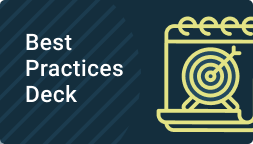Blog | Dee’s Cold Calling Playbook
category
Texting Playbook
May 30, 2024

Sales has changed. Technologies and attitudes have shifted how we interact with our phones and strangers – no one has a desk phone anymore. But people’s motivations and interests are the same.
At a time when email security and AI are blocking outreached channels, the phone still gets through every time as long as you have the phone number.
In this playbook outlined are tried and tested tactics that will get you on the way to calling your way to meetings that close – turn into new business.
When only around 37% of sales reps are hitting quota, you need every advantage you can get. The cold call might be it.
*Disclaimer:
- Tone of voice is crucial for cold calls. Practice the script until you have it almost memorized. Don’t hesitate to practice with friends, family, your dog, or even in an empty room.
- Do not call anyone on weekends. We work hard and use the weekends to spend time with hobbies, friends, family – to recharge. This will get you blacklisted.
- I work for a company called Modigie. We provide sales teams with mobile numbers for over 70% of their buyers, updating their data in real-time within the CRM. No more wasting time calling bad numbers. Contact your buyer or leave a winning voicemail instead of being caught off-guard when someone finally picks up the phone.
The Playbook
Step 1 - The Leadup
You have approximately 10 seconds to capture or lose someone’s attention. The first step in this process is to grab your buyer’s attention by clearly stating your intention.
Every conversation has a starting point. Most conversations begin with something like, “Hello, how are you?” or a similar phrase that breaks the ice and initiates the conversation.
The Leadup acknowledges that most sales calls interrupt what prospects are busy doing at the time of the call. Sales calls that immediately launch into a compelling company story are likely to be met with resistance, as prospects have little time for the same old “elevator pitch” that they’ve heard hundreds, if not thousands, of times before.
Asking prospects for just 10 seconds (or less) to explain the purpose of your call or to ask a quick question immediately puts their mind at ease, knowing that your call won’t take up their entire day. Most importantly, your “gold call” doesn’t sound like an “elevator pitch,” so prospects are less likely to dismiss your call and put up a defense against speaking with you.
Example: “Hello Tara, this is Pete with COMPANY. I’m hoping I might have 10-seconds to explain why I’m calling?”
If they ask for clarification, “This is a sales call but I promise it won’t ruin your day” and go into step two.
Step 2: Statement of Intent
Nothing is respected more than honesty and authenticity. This sets the stage for the rest of your call by letting buyers know
Suppose you decided to start your own lemonade stand as a business. If a potential customer who had never heard of lemonade before asked you what it is before making a purchase, how would you answer?
Would you go into all the details about lemons, where they are grown, and the content of each lemon used in your lemonade?
Probably not, especially if you wanted to attract a new customer. Instead, you would simply explain that lemonade is a “cold beverage for thirsty people” 🍋 and then ask if they would like to try some. Keep it simple!
The same rule applies when explaining your business to prospective customers. A long, detailed explanation can drive away attention, while a concise “Lemonade Statement” can attract customers to you.
The shorter, the better – aim for 10 words or less.
Power Words
Using impactful words and phrases can make a difference when engaging potential customers. By including these in your “Lemonade Statements,” you can emphasize the importance of what you have to say. Remember, prospects won’t be able to pay for your product or service without first paying attention to you. So, it’s a good idea to incorporate power words and phrases into your “Lemonade Statement” for maximum effect.
Some Power Word Examples:
Negative Tense – Pain, suffering anguish, discomfort, dissatisfied, unhappy, worried, fearful, wariness, concern, angry.
Positive Tense – value, appreciation, benefit, gain, winning, achieve.
Step 3: Let’s Get Down to Business
If you’re calling about business, here’s how to ask for what you want. Make it quick to continue the flow.
Now that you have explained your business to your prospect in simple terms, it is time to determine if the person you are calling has any problems you can solve or requirements you can fulfill. However, before diving into that, you should transition gradually with a simple statement of intent that keeps the conversation flowing.
After finishing with your ‘intent statement’, say the following:
“Here’s why I’m calling?”
“Here’s the question I’d like to ask you?”
Step 4: The Priority Question
If you’re calling about business, here’s how to ask for what you want. Make it quick to continue the flow.
At this stage of your cold call, the most important thing you can do is ensure that you are speaking to the right person on the telephone. You need to connect the person you are calling with the problem you can solve. Otherwise, the conversation you are about to have will lack relevance. If you are calling about one thing and the prospect has no idea what you’re talking about, your conversation will not progress.
The prospect’s response to your Priority Question will confirm if they have a personal focus on a problem that your business can solve.
Example: “Mr. Prospect, how much personal focus do you have upon solving problems with…?”
Think about the problem you are solving in your business, and ask your prospect if they have any involvement with it.
Step 5: The Force Question
Now it’s time to make the ask. Know your differentiator and lean into it on how you drive value. This is where Getting Down to Business and the Priority Question pay off.
At this stage of your cold call, the most important thing you can do is ensure that you are speaking to the right person on the telephone. You need to connect the person you are calling with the problem you can solve. Otherwise, the conversation you are about to have will lack relevance. If you are calling about one thing and the prospect has no idea what you’re talking about, your conversation will not progress.
The prospect’s response to your Priority Question will confirm if they have a personal focus on a problem that your business can solve.
Example: “Mr. Prospect, suppose my services were a two-step solution to a five-step problem you have that would result in a lowered cost of doing business, and help bring you new customers, would I get any of your attention”?
Step 6: The Closing Question
Now it’s time to book the meeting. Make sure to ask sooner than later, ideally within 48 business hours. Book a time, and appointment so that you can be prepared for the discovery call.
Once your prospect finds your Attention Question too good to refuse, you have succeeded in capturing their attention for the value you proposed. Now, you have the opportunity to schedule an appointment. The best part is that the prospect is now taking the initiative. All you need to do is ask for a mutually convenient time to speak, whether that is immediately or at another suitable time.
Example: After your prospect agrees to give you more of their attention, follow up by asking one of the following questions:
“Do you have 20 minutes on date and time?”
“Are you looking at your calendar”?
“What day works for you”?
“When can you meet tomorrow?”
Step 7: Profit

Takeaways
No way around it – cold calling can be quite challenging. During this process, you may encounter individuals who are not very polite and may even hang up on you. Nevertheless, it remains a crucial method for generating sales.
As sales representatives, we have limited control over the channels we can utilize. These include social media, email, phone calls, and perhaps brand promotion. That’s about it.
With the decline of desk phones, the rise of remote or hybrid work setups, and the increasing prevalence of text-based communication, the mobile phone will become an even more vital tool for sales professionals.
Moreover, the impact of your phone-based outreach extends beyond just the call itself. It also enhances the chances of receiving a response to your email and boosts the visibility of your company’s brand. Additionally, you have the option to leave a voicemail – which we’ll cover in the next playbook.
Wanting to upskill your mobile outreach even more? Click here to get to my Texting Playbook. Text is a nuanced channel. The playbook provides guardrails and tips to help you drive business in this modern market.



